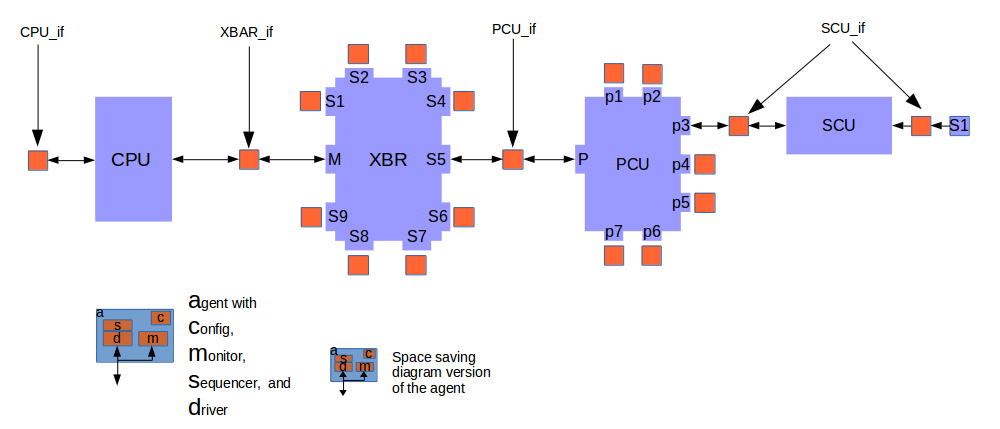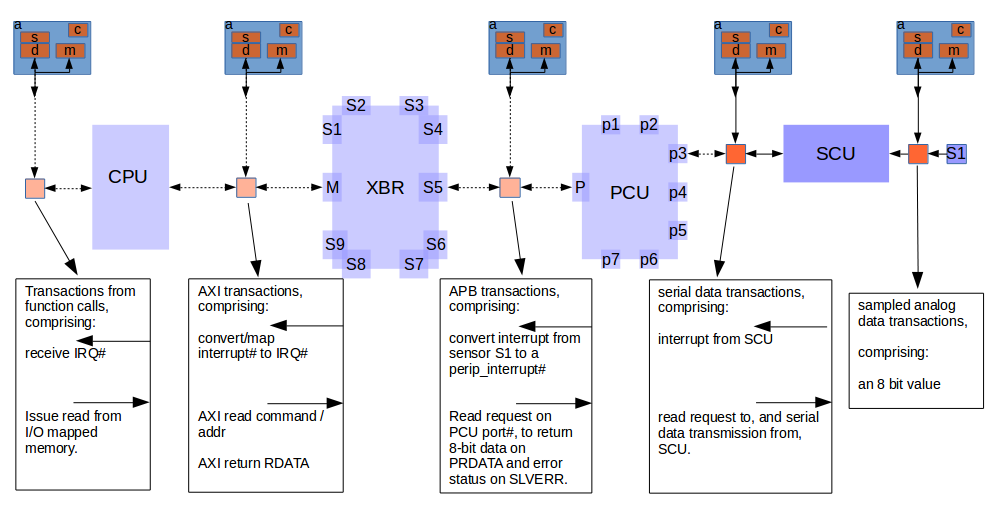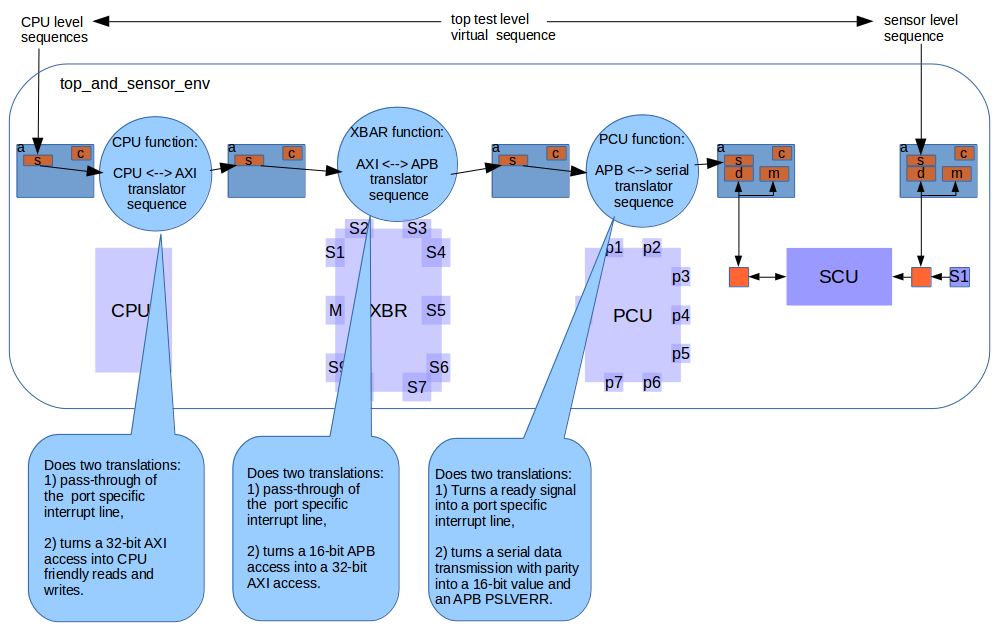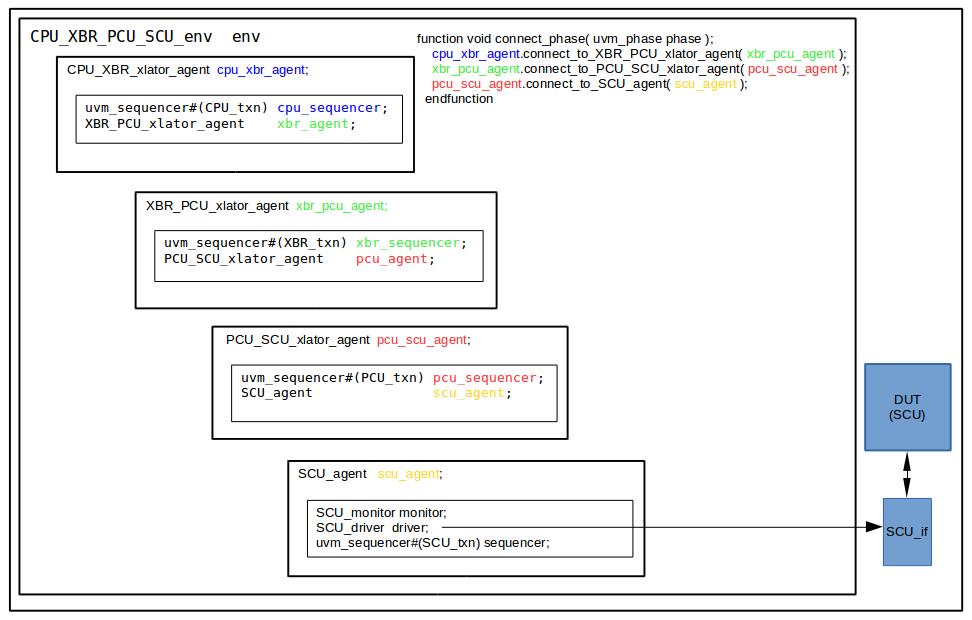virtual task body(); The blue color represents the upstream activity, the PCU.
The green color represents the downstream activity, the SCU.
PCU_txn p_txn;
SCU_txn s_txn;
forever begin
pcu_token.get(1) ;
pcu_sequencer.get_next_item(p_txn);
s_txn = SCU_txn::type_id::create(.name("s_txn"), .contxt(get_full_name()));
start_item(s_txn);
s_txn.go = ~p_txn.PWRITE ;
finish_item(s_txn);
p_txn.PRDATA = {7'b0,s_txn.txdata} ;
parity = ((s_txn.txdata[0] ^ s_txn.txdata[1]) ^
(s_txn.txdata[2] ^ s_txn.txdata[3]) ^
(s_txn.txdata[4] ^ s_txn.txdata[5]) ^
(s_txn.txdata[6] ^ s_txn.txdata[7])) ;
p_txn.PSLVERR = ( parity != s_txn.parity) ? 1 : 0 ;
`uvm_info("PCU_SCU_xlator_data_seq", $sformatf("PRDATA = %h", p_txn.PRDATA), UVM_MEDIUM)
`uvm_info("PCU_SCU_xlator_data_seq", $sformatf("PSLVERR = %h", p_txn.PSLVERR), UVM_MEDIUM)
pcu_sequencer.item_done ;
pcu_token.put(1) ;
end
endtask: body
|





